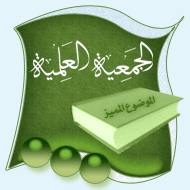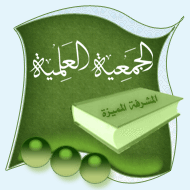 |
 |
جديد المواضيع |
 |
 |
|
|
|
|||||
 |
 |
إضافة إهداء |
 |
 |
|
|
|
|||||
 |
 |
جديد المواضيع |
 |
 |
|
|
|
|||||
 |
 |
إضافة إهداء |
 |
 |
|
|
|
|||||
 |
 |
 |
 |
|||
| قريبا | العـــــــــذاب بقلم : عبدالعزيز الرويلي |
 |
 |
|
||||||||||
 
|
|
|
أدوات الموضوع | تقييم الموضوع |
|
|
رقم المشاركة : 1 | ||
|
Access; Accessibility
Arrangements provided to ensure the opportunity for individuals to participate in an institution; often refers to the Arrangements offered to students with disabilities to ensure maximum opportunity. Accountability Processes used to demonstrate that institutions and individuals have fulfilled their obligations. Accreditation Formal procedure of gaining certification for a particular program or institution. Action learning setCooperative learning activity where small groups of students work to identify what action should be taken to address a real world problem. Action planSpecific proposal developed by a learner, teacher or institution to address problems or difficulties or meet a desired goal. Action researchA research methodology designed to have subjects, in particular teachers, to investigate an element of a particular activity which the aim of determining whether the changes can produce effective and positive improvements, especially student learning. Activation of prior knowledgeA constructivist instructional strategy aimed at having students access their own prior knowledge in order to develop meaning by combining new information with their own previous knowledge. Active learning methodsLearning methods that focus on ensure learners play and active role in the process of learning instead of passively receiving information. Added valueAdditional benefit gained by the use of specific factors in teaching, learning or administration activities. Adult and continuing educationEducation geared to the needs of mature students, especially during their working lives. Adult learningFormal education geared to individuals classified as adults, typically over the age of 18; includes education provided by institutions of higher education but may also include informal training of workers or others in the development of a specific skill set or knowledge. Aesthetic ResponseAn affective or emotional response a person has to material, which is based on the individual's background knowledge, attitudes, and experiences. Affective domainThe emotional aspect of experience and learning. Annotated bibliographiesBibliographies that include a summary description of the works listed. Accreditation of Prior (Experiential) Learning (AP(E)L)Mechanism for recognizing and giving credit for knowledge and skills gained in ways other than traditional courses such as work or life experiences; typically it is evaluated by the completion of a portfolio. Aptitude testStandardized test designed to assess an individual's potential to acquire and/or develop knowledge or skills. AppraisalA formalized evaluation, typically a face-to-face meeting, of an individual's or learner's progress and performance intending to identify strengths and weakness and improve future performance.. AssessmentThe process of evaluating and measure an individuals achievement; typically done with assessment tools such as assignments or examinations. Assignment return sheetsForms used to provide written comments regarding assignments completed by students. Asynchronous communicationCommunication that takes place either when communication between participants occurs at different times. Participants often are also in different lan guages. Contrasted with synchronous communication. BandwidthThis is a measure of the amount of data that can be transmitted over communication or network lines via the Internet. The higher the bandwidth, the great the amount of information that can be transmissed. BehaviorismA psychological theory that claims all mental states can be reduced to statements of observable behaviors. In learning theory, the claim is all learning is based on a stimulus-response relationship. BenchmarkingThe process for identifying standards to use in comparison of practices, activities, institutions or equipment; standards my be used to identify minimal levels or for determining relative performances for comparison of subjects. Bias Errors in statistical sampling or testing that are by favoring some factors over others. Bias reduces the overall validity of research. See also: Halo effect, Reliability, Validity BibliographyA listing of works used and/or considered by an author in the preparation of a work. BilingualPossessing knowledge of two languages; typically it refers to a person who can speak and write two languages. Blended learningAn educational formation the integrates elearning techniques including online delivery of materials through web pages, discussion boards and/or email with traditional teaching methods including lectures, in-person discussions, seminars, or tutorials. Bloom`s taxonomyA heirachical framework of learing based on three domains - the cognitive, affective and psychomotor; in the cognitive domain there are six levels of knowledge: knowledge, comprehension, application, analysis, synthesis, and evaluation. In the affective domain there are five levels: receiving phenomenon, responding to phenomenon, valuing, organizing values, and internalizing values. In the psychomotor domain there are seven levels: perception, readiness to act, guided response, mechanism, complex overt action, adaptation, and origination (the psychomotor levels where not originally completed by Bloom). Brainstorming Typically used in writing, but is any activity where individuals general ideas related to a topic or task; done in either groups or individually with no restriction on quality of ideas. Once ideas are generation, they are they evaluated and a decision about which to pursue is made. Bulletin boardElectronic version of a noticeboard; bulletin board programs allow people to leave, read and response to messages and are typically used for interest groups on specific topics and in distance learning courses. Case studyAn investigation format focusing on a specific group, setting, and time period with the aim of studying and clarifying a unique feature(s) of the situation. Class exercisesLearning exercises or problems students complete during regular classroom or laboratory sessions under the supervision of an instructor. CognitionMental abilities of knowing, perceiving, and understanding. Cognitive processMental process such as knowing, perceiving, and understanding. Cognitive domainThe mental aspect of experience and learning (knowing, understanding, etc.). Cognitive model of learningLearning models based on the theory that acquisition of new knowledge and skills rests on the existence and development of mental cognitive structures. Collaborative learningAn instructional method that emphasizes students working together in small groups to complete a task or reach a common goal; in some cases students may be responsible for each other's learning CompetenciesAn individual's abilities as they relate to knowledge, understanding, and skills; see also minimal competence. ComprehensionAbility to find and construct meaning from ****s. Computer assisted learningAn instructional format where the computer supplements the instructions, exercises, information and/or feedback provided by an instructor. Computer-based learningAn instructional format where the computer provides instructions, exercises, information and feedback in place of an instructor. Computer conferencingA format for holding discussions by participants in different places by connecting through computer networks to transmit messages that are either ****, audio, and or visual. This can be asynchronous using email or a listserver or synchronous using conferencing software. Computer marked assignments (CMAs)Assignments that are evaluated and assessed by use of a computer; typical examples are standardize placement tests. Concept mappingA learning strategy used to aid students in organizing information; concept maps take a variety of forms suited to the type of information and activity. ConstructivismA theory learning that claims people learn by constructing knowledge through social interactions with others. Content developerIndividual who creates and prepares materials used in a learning environment; materials can be in print of electronic format. Cont extThe setting where teaching and learning occur; identifying con**** involves noting social, geographical, political, and other factors related to the learning environment. Continuing professional development (CDP)Opportunities for individuals to increase their current level of knowledge and skills through coursework or other means in order to improve their employment. Continuous assessmentOngoing evaluation of work during a course in which the scores earned count toward the final evaluation. Constructed responseAssessment based on written material constructed by the student. Convergent assessmentAssessment based on emphasizing the ability of the students to focus upon a clearly defined task; opposed to divergent assessment. Cooperative learningLearning format the requires the cooperation of a small number of students who work towards the completion of a given task; each student is responsible for a part of the task, and the entire task cannot be completed without all the learners finishing their portion of the task. CounselingAid provided by a staff member or peer (student) in relation to an educational, personal, or social problem. Courseware Software and other computer-based materials developed for use in a course. Creative thinkingThought processes designed to encourage originality in the development and elaboration of original and diverse ideas. Criterion referencingAssessment based on predefined criteria; opposed to norm referencing. Critical incidentAn event that triggers reflective self-examination and critical assessment of the event. Critical thinkingEvaluating claims, assumptions, and implications of a particular point of view without simply accepting them as facts CurriculumBroadly understood as the subjects and materials to be taught by an educational institution; typically it is listed as a set of subjects, but also may include the learning experiences, skills, and abilities students are expected to learn. Curriculum mappingA process for organizing data reflecting the primary knowledge, skills, and assesments related to a subject area and used to facilitate communication and instruction. Deep learningLearning aimed at having students extract principles and underlying meanings in order to integrate them with previously acquired knowledge; contrast with surface learning. Diagnostic testExamination used to determine students current level of knowledge or skill to identify what course level they should be placed in or whether remediation is required. Disadvantaged studentsStudents who have not had the same opportunities as other students entering a course of study and may need special Arrangements or additional assistance to prepare them for study; disadvantages may be due to physical or emotional problems or deficiencies caused by inequities in social conditions. DissertationExtensive essay generally required at the completion of a doctoral program. Distance educationAny format of education provided to students who do not need to be physically present at an institution; previously materials were sent to students but now materials are provided via computer conferencing, video, Internet, and other electronic means. Distance learningLearning completed via a distance education format. Divergent assessmentAssessment based on emphasizing the ability of the student to develop additional skills than those specified in a clearly defined ta opposed to convergent assessment. DiversityVarieties of different backgrounds of a group of individuals that often require using a variety of methods of instruction. |
||

|
|
|
رقم المشاركة : 2 | ||
|
thanks..
I'd like to know ur reference |
||

|
|
|
رقم المشاركة : 3 | |||||
|
اقتباس:
 thanks Jasmine
|
|||||

|

|
| يتصفح الموضوع حالياً : 1 (0 عضو و 1 ضيف) | |
| أدوات الموضوع | |
| تقييم هذا الموضوع | |
|
|
|
|
|
Powered by vBulletin® Version 3.8.1 |
|
vBulletin Skin developed by : Rsm-w.com |
 |
 |